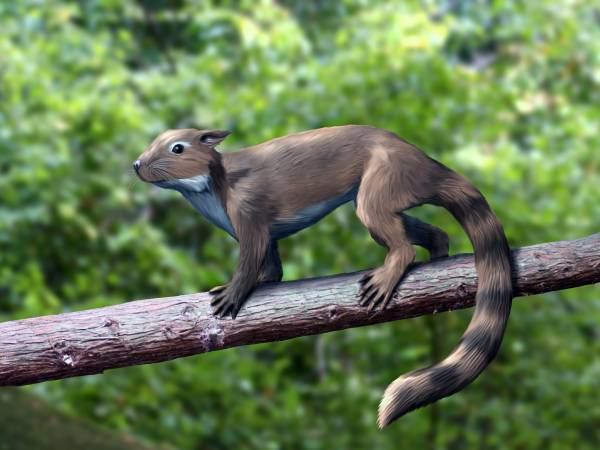Class Mammalia Genus †Shenshou | Phylum Chordata Order †Euharamiyida Species †S. lui | |
 | ||
Shenshou lui is an early mammal dating from the Oxfordian stage of the Late Jurassic, approximately 160 million years ago. Fossils were recovered from the Tiaojishan Formation in the Liaoning province of China.
Contents
Etymology
The generic name is derived from Mandarin (神獸 shénshòu) shen, meaning deity, and shou, meaning animal, while the specific name is in reference to Lu Jianhua, the scientist who collected the holotype specimen.
Description
Shenshou is thought to be arboreal because it had a light frame, a prehensile and elongated tail, and hands and feet which had evolved for clutching and enabled the animal to climb. These features, including the large incisors of Shenshou, made the animal resemble a squirrel. However, Shenshou are not the direct ancestors of squirrels, the resemblance being purely due to convergent evolution. Individuals are believed to have weighed 300 grams (11 oz). The presence of a three-boned middle ear suggests these animals were mammals. The teeth, which have a number of cusps, suggest that Shenshou was probably an omnivore, most likely with a diet of fruits, nuts and insects.
Significance
The remains of Shenshou were discovered along with fossils of two other extinct squirrel-like animals, Xianshou songae and Xianshou linglong, in strata dating back 160 million years. The animals were found to belong to a group referred to as haramiyids, now identifiable as early mammals. They lived alongside another group of small rodent-like animals, the multituberculates, which were already accepted as mammals. This discovery has pushed the date of the origin of mammals back to the Late Triassic, the period in which the haramiyid-multituberculate clade, Allotheria, originated, about 220 million to 200 million years ago. Haramiyids were previously known from fragments of teeth and jaw, but the less complete remains had not established whether they were mammals. The fossils found consisted of a skull, teeth and parts of the skeleton, which clearly indicate that Shenshou – and the other haramiyids – are mammals. Until this was established, mammals were thought to have originated in the Middle Jurassic, which lasted from 174 million to 164 million years ago.
